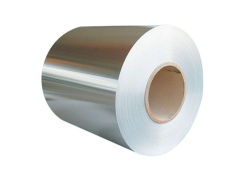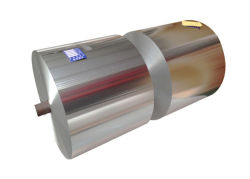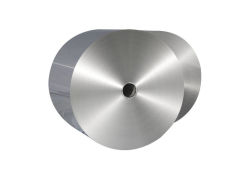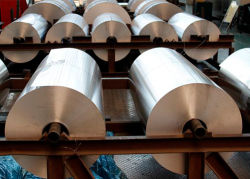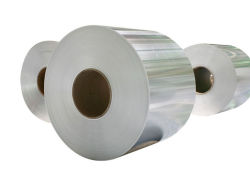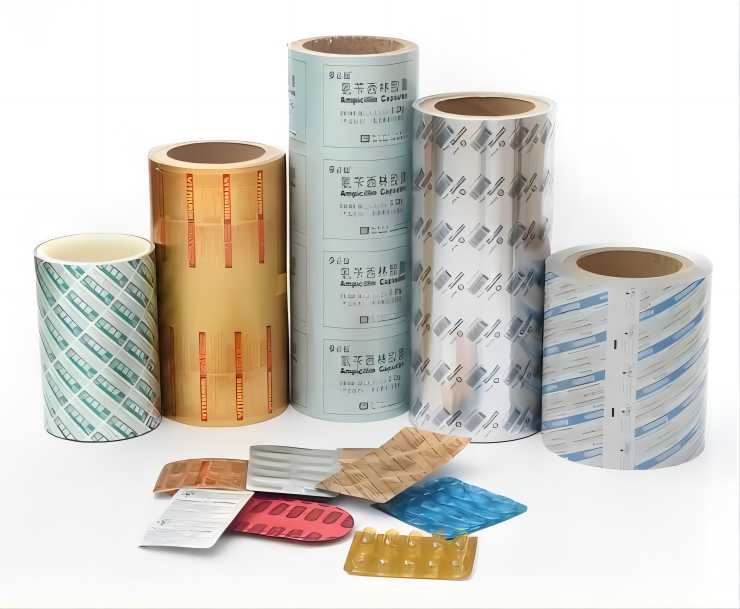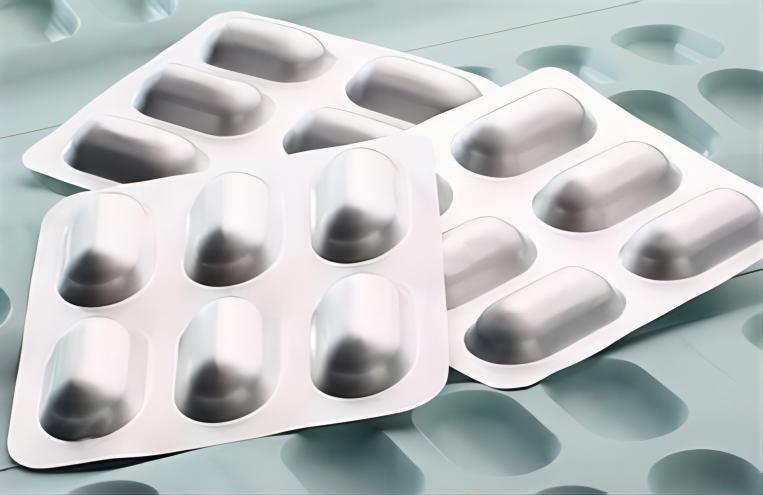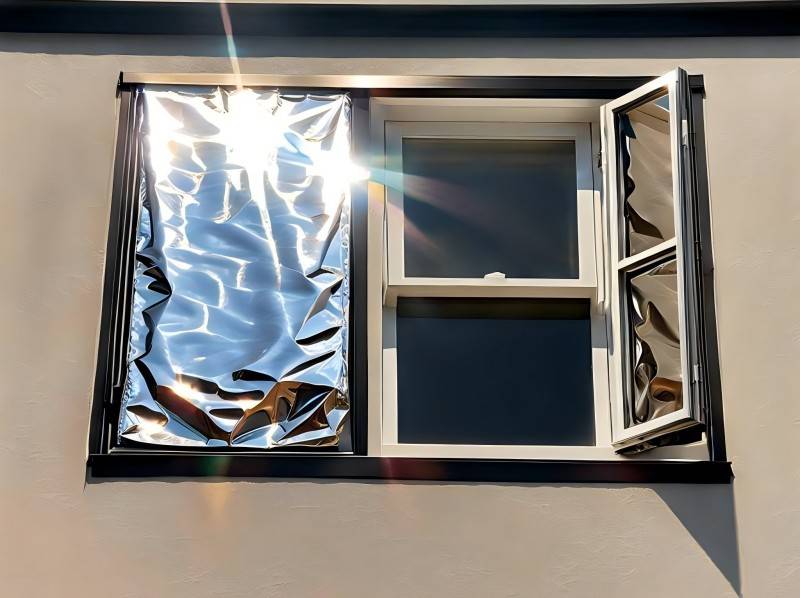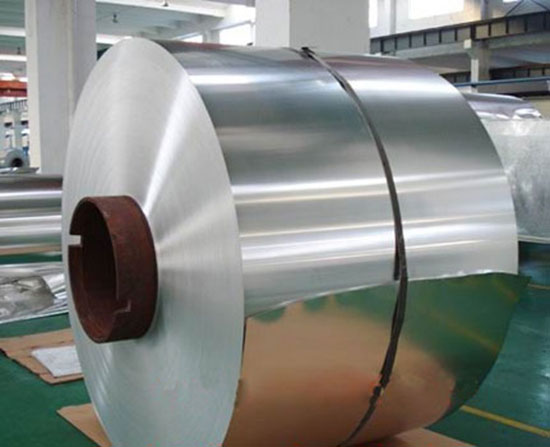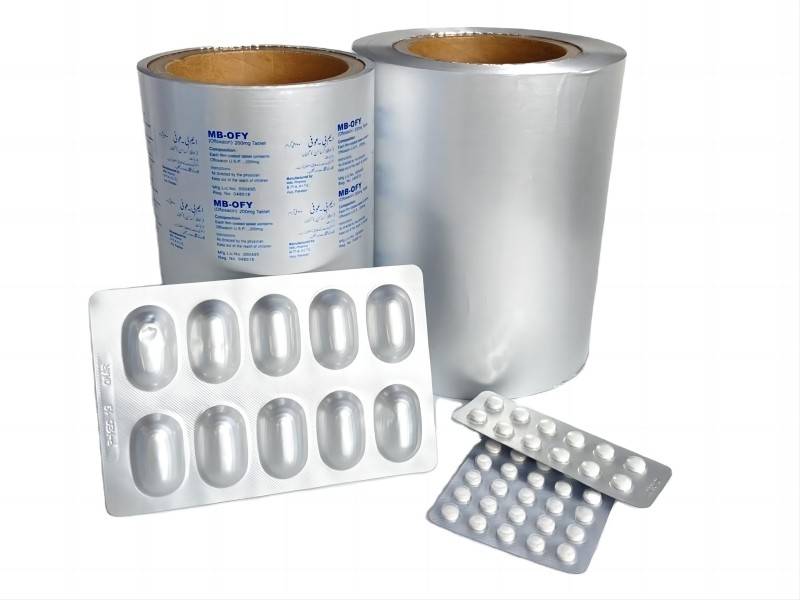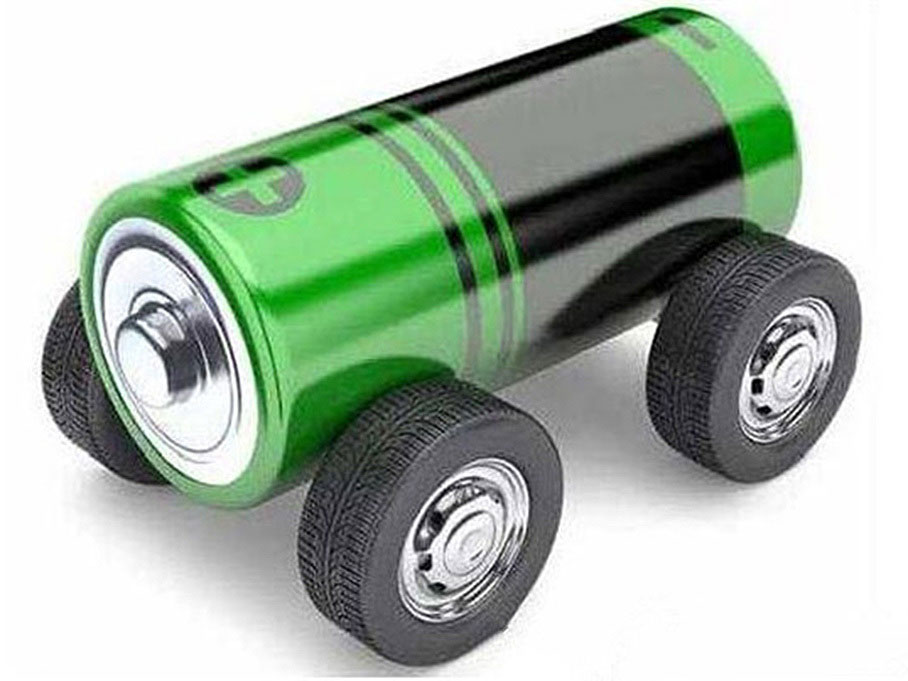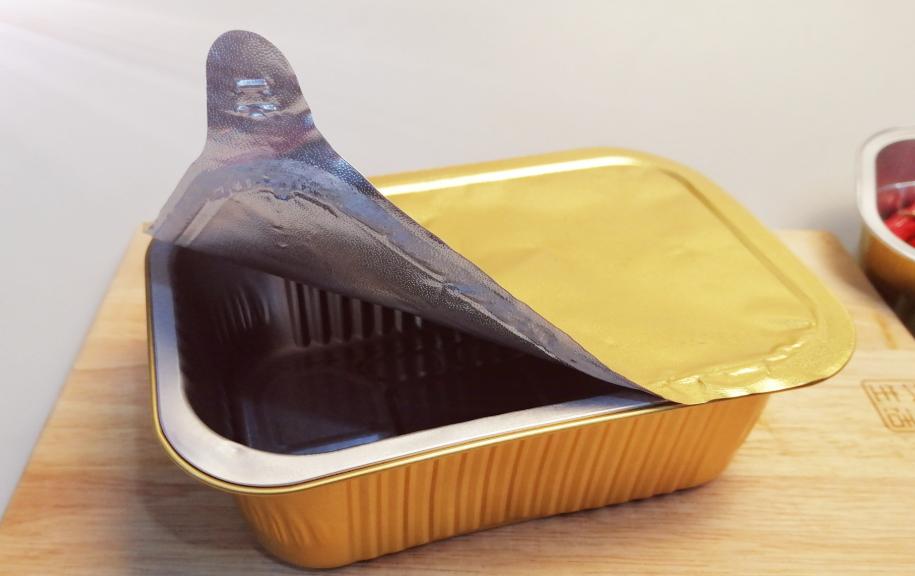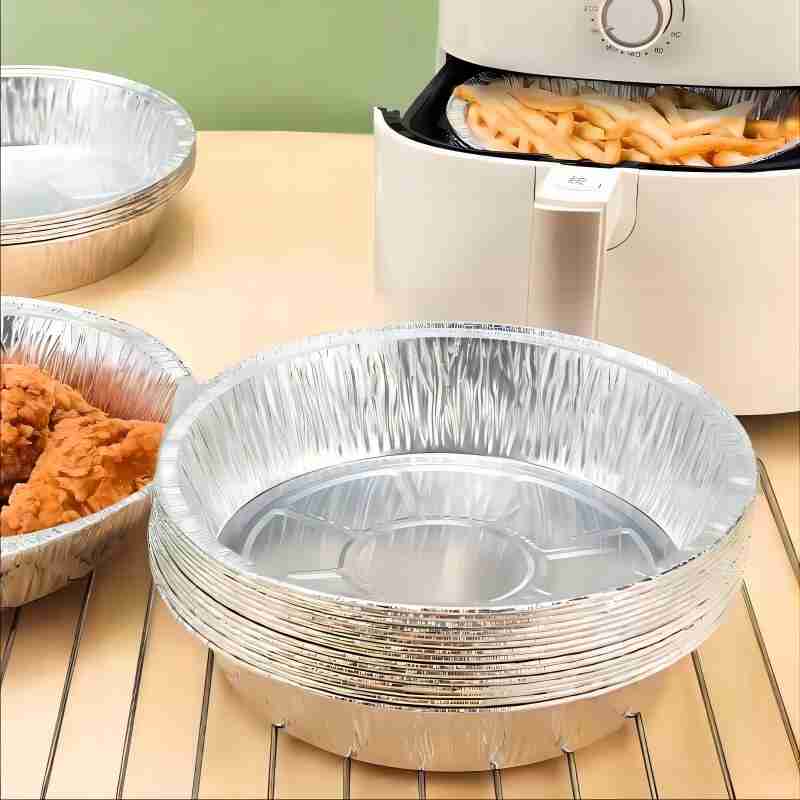Aluminum Foil is a hot stamping material that is directly calendered into thin sheets with metal aluminum. Its hot stamping effect is similar to that of pure silver foil, so it is also called fake silver foil. Because aluminum has a soft texture, good ductility, and silver-white luster, if the rolled sheet is mounted on offset paper with sodium silicate and other materials to make aluminum foil, it can also be printed. However, the aluminum foil itself is easy to oxidize and the color becomes dark, and it will fade when rubbed or touched, so it is not suitable for hot stamping of the covers of books and periodicals that have been stored for a long time. Aluminum foil is a packaging material with excellent performance. In daily life, the most common aluminum foil processed product is aluminum foil for food packaging and aluminium foil paper. Of course, the use of aluminum foil is much more than that. Therefore, as a packaging manufacturer, it is very important to choose aluminum foil with excellent performance and high quality. So how to choose high-quality aluminum foil? This article will discuss this issue in detail and give you some help.

Classification of Aluminum Foil
Classification by thickness
According to the difference in thickness, aluminum foil can be divided into thick foil, single zero foil and double zero foil.
- Thick foil (heavy gauge foil): a foil with a thickness of 0.1~2mm.
- Single zero foil (medium gauge foil): A foil with a thickness of 0.01mm and less than 0.1mm/.
- Double zero foil (light gauge foil): The so-called double zero foil is a foil with two zeros after the decimal point when its thickness is measured in mm. It is usually an aluminum foil with a thickness of less than 0.01, that is, an aluminum foil with a thickness of 0.005~0.009mm. In foreign countries, the aluminum foil with thickness ≤40ltm is sometimes called “light gauge foil”, and the aluminum foil with thickness >40btm is collectively called “heavy gauge foil”.
Classification by shape
According to the shape, aluminum foil can be divided into roll aluminum foil and sheet aluminum foil. Most of the aluminum foil deep-processed wool is supplied in rolls, and only a few handicraft packaging occasions use sheet aluminum foil. According to the state, aluminum foil can be divided into hard foil, semi-rigid foil and soft foil.
① Hard foil: aluminum foil without softening treatment (annealing) after rolling, without degreasing treatment, there will be residues on the surface. Therefore, the hard foil must be degreased before printing, laminating, and coating, and it can be used directly if it is used for forming.
② Semi-rigid foil: aluminum foil whose hardness (or strength) is between the rigid foil and the soft foil, usually used for forming processing.
③ Soft foil: Aluminum foil that has been fully annealed and softened after rolling. The material is soft and there is no residual oil on the surface. Most application areas, such as packaging, composites, electrical materials, etc., use soft foils.

Classification according to processing status
According to the processing state, aluminum foil can be divided into plain foil, embossed foil, composite foil, coated foil, colored aluminum foil, and printed aluminum foil.
① Plain foil: Aluminum foil without any other processing after rolling, also called a smooth foil.
② Embossed foil: aluminum foil with various patterns embossed on the surface.
③ Composite foil: composite aluminum foil formed by pasting aluminum foil, paper, plastic film, and cardboard together.
④ Coated foil: aluminum foil coated with various resins or paints on the surface.
⑤ Colored aluminum foil: A single-color aluminum foil is coated on the surface.
⑥ Printing aluminum foil: aluminum foil forms various patterns, patterns, characters, or pictures on the surface by printing, it can be one color, up to 12 colors.
Flexible aluminum foil can be further pressed into four zero foils for high-end decoration.
Common problems in the production of aluminum foil
(1) Pinholes are the main defect of aluminum foil. Among the raw materials, the size of dust on the roll, the rolling oil, and even the dust in the air reaching about 6μm into the roll gap will cause pinholes. Therefore, it is impossible for 6μm aluminum foil to have no pinholes. It can only be evaluated by the number and size.It is generally believed that pinholes are mainly related to gas content, inclusions, compounds and component segregation. Taking effective aluminum liquid purification, filtration, and grain refinement can help reduce pinholes. Of course, the use of alloying and other means to improve the hardening characteristics of the material will also help reduce pinholes.
(2) Roll print, roll eye, uneven gloss. It is mainly the aluminum foil defect caused by the roll, which is divided into three types: point, line and surface. The most significant feature appears in three cycles. The main reasons for this kind of defect are: incorrect grinding of the roll; foreign matter damages the roll: the roll is damaged by the defect of the incoming material; the roll is fatigued; the impact and slippage between the rolls. All the factors that can cause damage to the surface of the roll can cause harm to aluminum foil rolling. Because the surface finish of aluminum foil rolling roll is very high, slight uneven gloss will also affect its surface condition. Regular cleaning of the rolling mill, keeping the rolling mill clean, ensuring the normal operation of the rolling cleaner, regularly changing rolls, and reasonable grinding are the basic conditions to ensure the uniformity of the surface of the aluminum foil after rolling.
(3) Thickness difference. The difficulty of controlling the thickness difference is a characteristic of aluminum foil rolling. The thickness difference of 3% may not be difficult in the production of plates, but it is very difficult in the production of aluminum foil. The reason is that the thickness is thin, and other trace conditions can affect it, such as temperature, oil film, and oil and gas concentration. A roll of aluminum foil can be rolled up to hundreds of thousands of meters, and the rolling time is as long as 10 hours. With time, the thickness difference is easy to form, and the only way to adjust the thickness is the tension speed. These factors have caused the difficulty of thickness control in aluminum foil rolling. Therefore, the real control of the thickness difference within 3% requires many conditions to ensure that it is quite difficult.
(4) The seam is a peculiar defect of foil rolling, which splits straight along the longitudinal direction during rolling, often accompanied by metal wires. The root cause of the seam is the discount on the inlet side, which often occurs in the middle, mainly due to the loose middle of the incoming material or the bad roll. Severe slits cannot be rolled, while slight slits crack in the subsequent slitting, which often results in a lot of waste.
(5) Defects in the coil. Coiling defects mainly refer to loose coils or tightness inside and outside. Due to the limited tension of aluminum foil, it is difficult to roll up hard rolls. It is ideal to obtain tight inner and outer rollers, but sufficient tension is a condition to form a certain tension gradient. Therefore, the coiling quality ultimately depends on the quality of the plate. Loose coils inside and tight outside will form horizontal edges, and loose coils will form ellipses, which will affect later processing.
The right choice of high-quality aluminum foil
For factories that need to use aluminum foil as a processing material, choosing high-quality aluminum foil needs to pay attention to the following issues.
Whether the aluminum foil is wrinkled.
Due to the serious bad shape of the aluminum foil, wrinkles are formed when the aluminum foil is rolled or unrolled. The essence is that the tension is insufficient to make the foil surface flat. For a device with a tension dimension of 20MPa, the shape of the foil surface should not be greater than 30I. When it is greater than 30I, it will inevitably wrinkle. Because aluminum foil is often subjected to greater tension during rolling than subsequent processing, some only show poor shape during rolling, including incorrect roll grinding, incorrect roll shape, poor shape of incoming material, and incorrect adjustment of shape.
Whether there are bright spots, bright marks and bright spots on the aluminum foil.
The bright spots, bright marks, and bright spots on the double surface of aluminum foil caused by improper use of double oil are mainly due to insufficient double oil film strength, or uneven rolling surface caused by uneven rolling, and the appearance is hemp skin or foreign body pressure. Into the state. Selecting a reasonable double oil, keeping the incoming material clean and the roll surface uniform are effective measures to solve this type of defect. Of course, it is also necessary to change the amount of reduction and choose a good aluminum plate.
Whether the aluminum foil has dense pinholes.
The pinholes of 6μm aluminum foil rolled by high-quality hot-rolled material can be less than 100/㎡. When the cast-rolled material is well purified, the 6μm aluminum foil pinholes are less than 200/㎡.
With the continuous update of the technology, the production process of aluminum foil manufacturers is also constantly improving, and most manufacturers can provide good aluminum foil materials.

Of course, you need high-quality aluminum foil, but you may also worry that the uneven quality of aluminum foil will affect the production quality of your products. Therefore, it is very important to choose a high-quality aluminum foil supplier. Excellent aluminum foil supplier can monitor the entire production process of aluminum foil, so they can provide high-quality aluminum foil to dispel your worries. Regardless of your demand, CHAL Aluminium Corporation will provide specific high-quality aluminium foil products that suit your needs. We provide various types of aluminum foil (including 3003, 3004, 8011 and other different types of aluminum foil). Whether it is aesthetic changes or excellent mechanical properties, we will provide you with precise aluminium foil! Contact us now to learn more about our aluminium foil.

